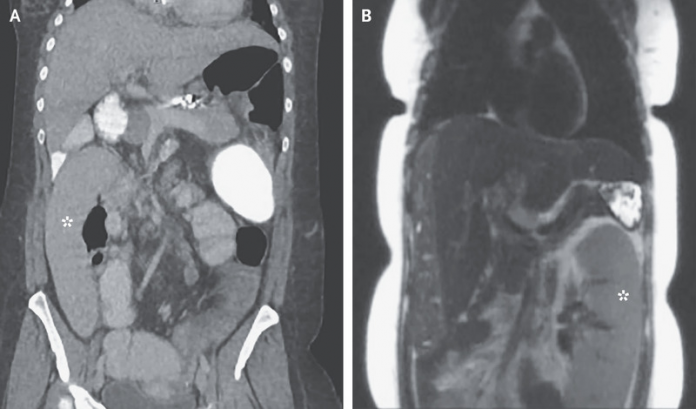
36-year-old woman presented to the emergency with a 1-day history of abdominal pain and vomiting, diagnosed with wandering spleen.
A 36-year-old female patient presented to the emergency with complaints of abdominal pain and vomiting. The symptoms were a concern for the patient because of her medical and surgical history. In addition, she was undergoing evaluation for liver transplantation. According to the patient, the symptoms had appeared a day ago. The patient was diagnosed with wandering spleen.
The patient’s medical history revealed that she had ulcerative colitis and cirrhosis because of primary sclerosing cholangitis. She had undergone multiple surgical procedures in the past including a colectomy, cholecystectomy and appendectomy. Physical examination showed diffuse abdominal tenderness. Laboratory studies showed an increase in lipase level. قواعد لعبة بوكر
For further evaluation the patient was advised an abdominal computed tomography. The scan showed that the spleen was located in the right lower quadrant with the pancreatic tail looped inferiorly and to the right. The spleen is normally in the upper left side of the abdomen, next to the stomach under the rib cage. Two days before the patient presented to the emergency, she had undergone a routine screening by means of magnetic resonance cholangiopancreatography for hepatocellular carcinoma.
Imaging showed that the patient’s spleen was located on the left side of the abdomen with a normal appearing pancreas. In addition, there were no signs of biliary stones.
Wandering spleen
Wandering spleen is a rare genetic condition that can occur as a result of the splenic ligaments. The spleen lacks one or more ligaments that hold it in its normal position. It is referred to as congenital wandering spleen if a person is born with it. However, the condition is not hereditary. طريقة الربح في الروليت
The movement of spleen can cause torsion of structures near the splenic hilum including the pancreatic tail, causing acute pancreatitis. Treatment includes splenectomy. However, in this case the patient was given parenteral pain-control treatment and hydration. The patient’s abdominal pain and vomiting resolves. Moreover, the splenectomy was deferred because the patient was undergoing evaluation for liver transplantation.
References
Wandering Spleen https://www.nejm.org/doi/full/10.1056/NEJMicm2003627



